What Ever Happened to the U.S. People's Convoy?

It’s been a while since we’ve covered the trucking protests and you might be wondering what happened with the U.S. People’s Convoy that emerged from the still-smoldering ashes of the Canadian Freedom Convoy. Well, it’s been circling Washington, D.C. for the last several weeks in the hope it can draw sufficient attention.
Unlike the Canadian-based convoy, which saw the government deploy armed men to clear demonstrations taking place in front of Ottawa’s Parliament Hill, the Americans have remained mobile to avoid getting cornered by authorities. Stationed out of Hagerstown Speedway in Maryland, truckers have established a base of operations where they can service vehicles whenever they’re not on the Beltway protesting. Drone shots from above have indicated that there are usually a few hundred trucks parked at the racetrack each morning, though videos from inside show evening returns including hundreds more supportive passenger vehicles. While journeys into the city do take place, they typically involve a handful of trucks designed to make some noise before quickly retreating to avoid being penned in.
Washington established numerous checkpoints and barricades in anticipation of the convoy in February, calling in the National Guard for assistance. This has discouraged truckers from establishing any kind of base camp within the city, fearful that they would be met with a response akin to what the Freedom Convoy endured. The logistics required here are on par with what would be expected of a small army. Organizers use CB radios to line up trucks before they run side-by-side for miles as they slowly circle Washington (starting around March 6th). Vehicles are rotated in and out, provisions have to be brought in to feed everyone, and smaller groups sometimes break off to drum up support elsewhere.
While the U.S. convoy’s grievances are a little broader than its Canadian counterpart, the core goal remains fixed upon ending lockdown mandates members believe have helped to upend society. They want the emergency declared over and any freedoms stifled in the interim to be immediately reinstated. That means no COVID passports, forced vaccine mandates, contact tracing, mask requirements, or travel/trade restrictions. But they’re also upset with rampant government spending, unbridled inflation widening the national wealth gap, Big Tech censorship, swelling authoritarianism, corporate corruption, so-called cancel culture, what they see as legacy media outlets lying to advance specific agendas (e.g. alleging Canadian protestors engaged in widespread violence), and a political class that seems wholly unaccountable for past misdeeds. Demonstrators have likewise expressed their collective dismay after financial institutions acquiesced to demands from the Canadian government to freeze the bank accounts of truckers and other individuals expressing political dissent — with many arguing that U.S. institutions have engaged in similar, unacceptable behaviors.
In that sense, the People’s Convoy is much like Occupy Wall Street. Both have Canadian roots and effectively served to draw attention to inequality between classes and how the government frequently backs corrupted business interests, only to be undermined by the legacy media with some marked differences. For starters, there are fewer individuals living today that are willing to blindly trust outlets owned by tech billionaires, financed by governments, or hosted by people who they’ve previously caught fibbing in ways seemingly designed to advantage the dominant political class.
However, the mounting media pressure has still associated the convoy with the opposition, despite participants appearing to include plenty of independent voters and moderate liberals breaking away from establishment Democrats. As a result, Senator Ted Cruz (R-TX) has conducted numerous ride-along events where he speaks directly with convoy members and has been encouraging the Republican Party to formally embrace the movement in a handful of meetings held in Washington. Sen. Ron Johnson (R-WI) has also expressed support, saying the convoy helped give a voice to millions of people who have concerns with mandates and other issues related to the pandemic.
Brian Brase, one of the convoy’s organizers, has repeatedly tried to keep the message clear by spending the last month reiterating the same mantra to politicians and the public.
“We’re going to keep looping the beltway until we’re heard,” Brase told reporters earlier this month, adding that American and Canadian complaints concerning the government response to COVID-19 are entirely valid and should never have been framed as fringe positions.
“We’re not anti-vaxxers,” he continued. “We’re just pro-choice.”
I would suggest anybody with lingering questions about the truckers dive into the multitude of live streams happening from within these convoy events. While a majority of these come from people directly involved with (or sympathetic to) the demonstrations, they typically incorporate dozens of candid interviews with people on the ground.
This provides a better, more nuanced sense of what’s actually happening on a day-to-day basis than any singular news article. My own opinion of the Canadian and U.S. convoys is pretty well steeped in tracking numerous channels where an individual strapped a camera to themselves and attended protests with a minimal amount of comment. All I can say is that it paints a very different picture than what’s being showcased in the corporate media, regardless of any outlets’ preferred political affiliation.
If you want an example, here’s an article from the Saudi-owned The Independent (the irony) saying the People’s Convoy effectively disbanded in February, followed by footage from inside the still-mobile lineup of trucks roughly a month later. Unfortunately, trucking streams have a tendency to be taken down on YouTube for reasons that are never thoroughly explained, encouraging many streamers ( some of whom also covered the Canadian demonstration) to take their channels over to Rumble or other Big Tech alternatives. As fortune would have it, leveraging trucks as a tool for political change has been deemed substantially more controversial than other forms of protest. And that should tell you something in itself.
Ed. note: As Matt correctly notes, many YouTube live streams come from folks who are biased towards (or against — the street goes both ways) the truckers. We’re including the links so you can see for yourself, but you should always be cautious of YouTube live streams from random citizens, regardless of their place on the political spectrum, as they often simply do not have rigorous editorial standards or journalistic training. Buyer beware, caveat emptor, et cetera.
How long will protests continue? Considering truckers are broadly aligned against the current administration, similar to the Canadian convoy, there’s little hope of their ever getting bipartisan support and creating change overnight. Organizers have said they’ll continue demonstrations until all mandates are lifted. Others have said they’ll stay on until concerns extending beyond the scope of COVID have been dealt with and the United States sees a meaningful change in leadership. But running these trucks on the daily is costing a fortune and there have been rumors that the convoy is running out of money.
Christopher Marston, the founder of the American Foundation for Civil Liberties and Freedoms (AFCLF) that collected nearly $1.7 million on behalf of the truckers, recently suggested that media blackouts have discouraged people from donating and made the convoy appear smaller than it is. As a result, the People’s Convoy could find itself without sufficient funding to keep trucks running and help offset revenue lost by participants not working for the last month. Though some have said freight rates and diesel prices have quickly changed to a point where it has become exceedingly difficult for independent operators to make any money — which has been added into the laundry list of complaints North American truckers have shared with the world this year.
“[It’s] not a lot, but the media has slowed down a ton and the truckers are not making the ask for money the way they should, despite training and guidance,” Marston told FreightWaves on Tuesday.
At the end of the day, this is a grassroots movement that’s directly at odds with those in power and the mainstream press. Its decision to avoid planting itself in Washington, similar to how Canadian truckers held parts of Ottawa, may have made it difficult to pin down. But it’s also easier to ignore if you’re not commuting into the city yourself every day, with no public venue for photo opportunities or routine coverage. My guess is that the convoy will gradually lose momentum without additional funding and attention, resulting in more disenfranchised voices going unheard. Footage from this week’s events already looks to be smaller than those from weeks past.
Meanwhile, there have been stirrings that the next step for truckers (if the People’s Convoy fails) will be to organize national boycotts for certain cities in an effort to pressure lawmakers to publicly address their demands, focusing on regions with leadership that has opted to retain COVID-19 restrictions.
[Image: Nicole Glass Photography/Shutterstock]

A staunch consumer advocate tracking industry trends and regulation. Before joining TTAC, Matt spent a decade working for marketing and research firms based in NYC. Clients included several of the world’s largest automakers, global tire brands, and aftermarket part suppliers. Dissatisfied with the corporate world and resentful of having to wear suits everyday, he pivoted to writing about cars. Since then, that man has become an ardent supporter of the right-to-repair movement, been interviewed on the auto industry by national radio broadcasts, driven more rental cars than anyone ever should, participated in amateur rallying events, and received the requisite minimum training as sanctioned by the SCCA. Handy with a wrench, Matt grew up surrounded by Detroit auto workers and managed to get a pizza delivery job before he was legally eligible. He later found himself driving box trucks through Manhattan, guaranteeing future sympathy for actual truckers. He continues to conduct research pertaining to the automotive sector as an independent contractor and has since moved back to his native Michigan, closer to where the cars are born. A contrarian, Matt claims to prefer understeer — stating that front and all-wheel drive vehicles cater best to his driving style.
More by Matt Posky
Latest Car Reviews
Read moreLatest Product Reviews
Read moreRecent Comments
- Flashindapan Beautiful color combinations. I assumed they stop selling the TT here at least five or six years ago.
- Carson D Just don't be the whistleblower who reports on the falsification of safety data. That's a deadly profession.
- Carson D I'd have responded sooner, but my computer locked up and I had to reboot it.
- Todd In Canada Mazda has a 3 year bumper to bumper & 5 year unlimited mileage drivetrain warranty. Mazdas are a DIY dream of high school auto mechanics 101 easy to work on reliable simplicity. IMO the Mazda is way better looking.
- Tane94 Blue Mini, love Minis because it's total custom ordering and the S has the BMW turbo engine.



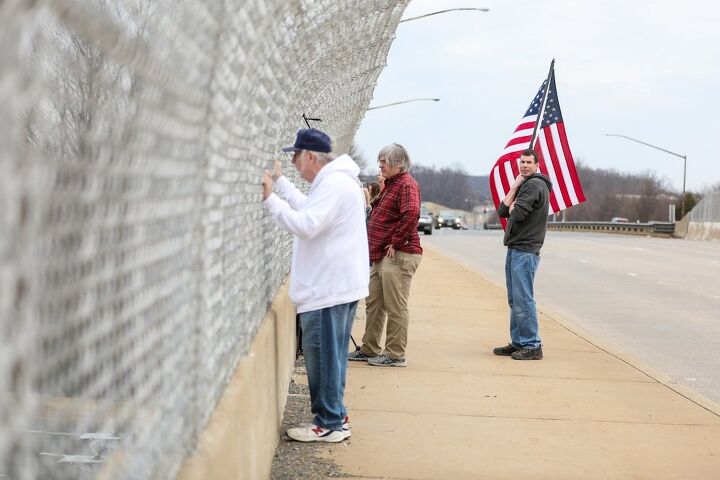















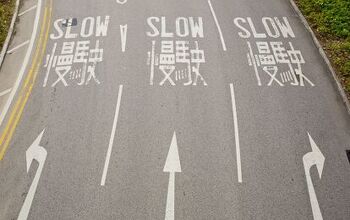
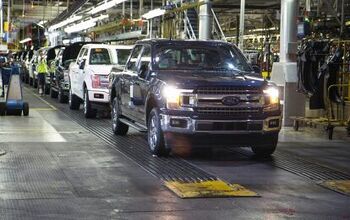
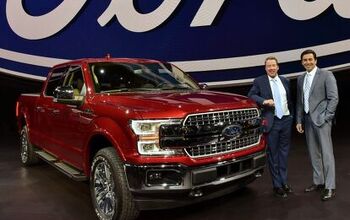



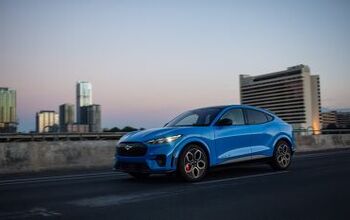


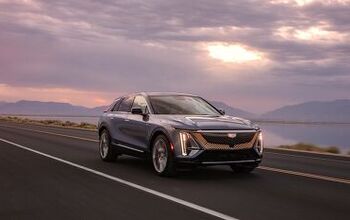



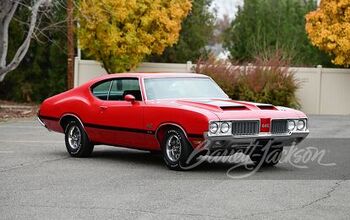
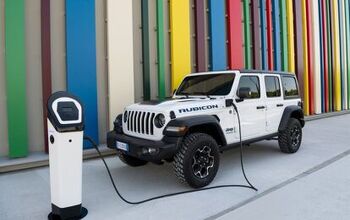
Comments
Join the conversation
I just have one question: Who's paying for it all? Think about how much fuel those trucks burn on a daily basis; Think about the maintenance that has to be performed per Federal Law; Think about the money the drivers themselves are losing because they're not making manifest runs; Think about the cost of rent at the speedway, which is preventing any revenue from racing--will the track run the truckers off when racing season gets started in earnest? Think about the cost of food for all those people; In all, far more money is simply being wasted and lost as these people waste EVERYBODY'S time and only make DC drivers more angry as traffic is now worse than average throughout the day. The simple fact is that their protest is going nowhere; it's literally running in circles over demands that, to a very great extent, had already been met before they even arrived!
Turdblossom festival….